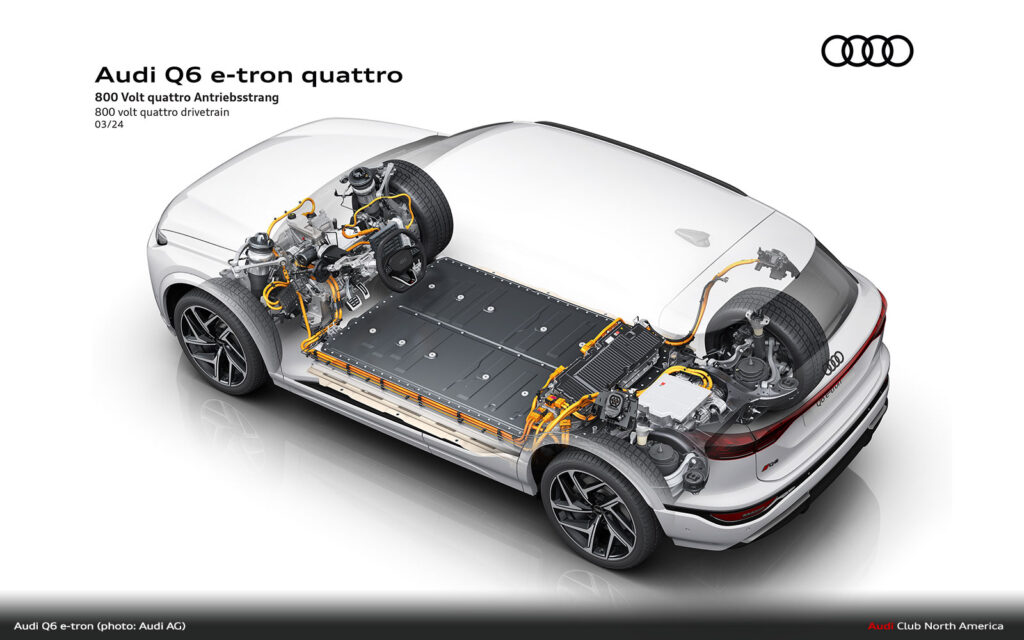
Audi Future Models Roadmap: PPE Electric Motors & Batteries
New electric motors are a significant upgrade for PPE, offering higher performance than we’ve seen so far. These new motors are of the permanent magnet synchronous (PSM) variety, allowing for stators of three different lengths (3.9 inches, 5.9 inches and 7.9 inches), and with a common diameter of 8.3 inches. The longer the stator, the more power and torque delivered. The result is three different power and torque outputs while retaining a significant number of shared components.
These motors are paired with a single-speed transmission that can be paired with one of four different gear ratios to further tailor performance. These units can also be decoupled from the wheels to allow for more efficient coasting. Two different modular inverters are also available to be utilized, either silicon or silicon carbide for increased efficiency.
At launch, PPE vehicles will be dual motor with all-wheel drive. Motor Trend’s sources at Audi suggest the front axle e-motor is 35 percent smaller, 20 percent lighter, 15 percent less expensive to produce and uses 30% less energy than the front motor in the current Q8 e-tron.
100% of drive will be sent from the more powerful rear motor in normal driving conditions, with the front motor acting passively except in situations of the highest performance demands and as the system senses a loss of traction.

Under braking, that front motor is less passive, as it is used to recuperate up to 240 kW of energy with regenerative braking.
Beyond the three spec motors above, there will likely be an even higher output to come. For the Macan, Porsche has revealed its own motor with an even larger 9.0-inch diameter and 8.3-inch-long stator that will bestow the upcoming Macan Turbo with 603 hp and 738 lb.-ft of torque.
Powering these models will be the latest battery tech from the Volkswagen Group. While details are still limited for Audi models, expect them to use similar if not identical tech to what we’ve now seen in the Macan EV. This means a modular prismatic battery that weighs 1260 pounds. Each battery is made up of 12 modules containing 15 prismatic cells each and connected in series.
Obviously, the primary goals for batteries today are range and speed of charging, but other advantages include individual modules that can be replaced separately or updated as technology improves. Porsche also claims the new battery chemistry requires 60 percent less cobalt while still delivering 30 percent higher energy density as compared to the J1-based e-tron GT and Porsche Taycan models.







Responses